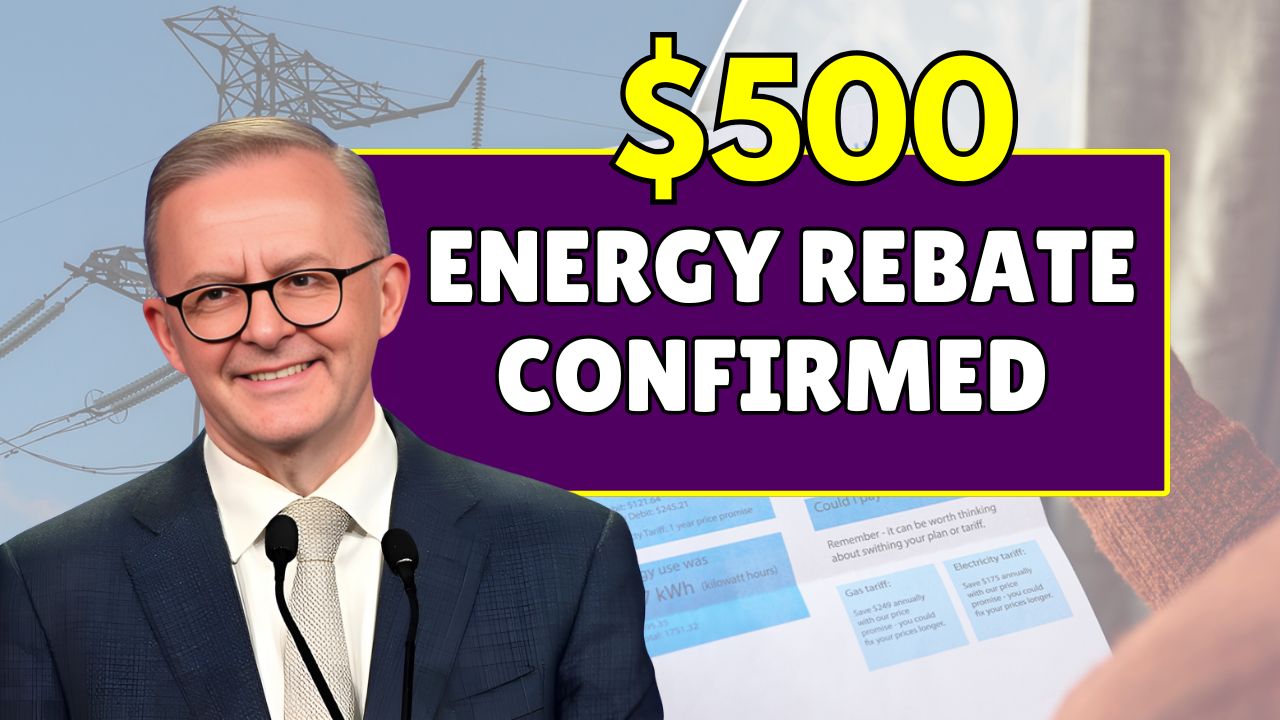In a move to ease cost-of-living pressures for households and small businesses, the Australian Government has officially expanded the national energy rebate program for 2025. Starting from January 1, 2025, eligible Australians will receive an extra $500 energy rebate, a major increase from previous years. This expansion comes as part of the government’s broader affordability strategy to support low- and middle-income families facing ongoing electricity price hikes.
The rebate expansion was confirmed in the 2024-2025 Federal Budget and will apply to a wider pool of recipients, including concession card holders, welfare recipients, and certain small business operators. The government expects over 10 million Australians to benefit from the updated scheme, with payments automatically applied to electricity accounts in quarterly installments throughout the year.
Who Qualifies for the Extra $500?
Eligibility for the new $500 energy rebate is based on income, concession status, and household type. The program is jointly funded by the federal and state governments, and each state will administer its own delivery timelines. Recipients do not need to apply, as the payments will be credited directly to energy bills by providers.
The following categories of Australians are expected to qualify for the expanded rebate:
- Pensioners and Seniors Card holders
- Health Care Card holders
- Veterans receiving a DVA payment
- Recipients of income support such as JobSeeker, Parenting Payment, Youth Allowance, and Disability Support Pension
- Low-income households as defined by energy retailers and state agencies
- Small businesses with annual electricity usage below the threshold set by each state or territory
Energy Rebate Breakdown for 2025 by State
The total rebate amount and delivery frequency will vary slightly across states due to different local energy pricing structures and administration schedules. Here’s a general breakdown of how the $500 rebate is expected to be distributed across Australia:
| State/Territory | Total Rebate in 2025 | Payment Frequency | Additional Support Offered |
|---|---|---|---|
| New South Wales | $500 | $125 per quarter | Energy Accounts Payment Assistance |
| Victoria | $500 | $125 per quarter | Winter energy concession continuation |
| Queensland | $550 (extra $50 top-up) | $137.50 per quarter | Solar rebate top-ups for eligible homes |
| South Australia | $500 | $125 per quarter | Cost-of-living concession integration |
| Western Australia | $500 | Two payments of $250 | Regional hardship support |
| Tasmania | $500 | $125 per quarter | Heating allowance coordination |
| ACT | $500 | $125 per quarter | Rental energy efficiency rebates |
| Northern Territory | $500 | $125 per quarter | Remote area power subsidy maintained |
These figures are expected to be confirmed in each jurisdiction’s 2025 state budget updates and will be administered in cooperation with energy retailers.
Small Businesses Included in Support Measures
For the first time since the pandemic, eligible small businesses will also receive direct energy bill relief. Businesses that use less than 100 MWh of electricity annually and are classified as micro or small enterprises under their energy contract will automatically receive the rebate. This aims to reduce overhead costs and improve cash flow for smaller operators struggling with utility expenses.
Why the Expansion Was Needed
The rebate increase follows sustained pressure from advocacy groups, welfare organisations, and state governments after several consecutive years of energy price increases driven by global fuel volatility and domestic grid upgrades. Energy prices surged by an average of 20% in parts of the country during 2023–24, forcing many families to cut usage or fall into arrears.
By raising the rebate to $500, the government hopes to prevent energy disconnection risks for vulnerable consumers and promote greater billing stability during seasonal peaks, particularly winter and summer.
No Application Needed – Payments Are Automatic
One of the biggest advantages of the expanded rebate system is its automatic delivery. Eligible individuals do not need to submit any forms or applications. If your Centrelink or DVA payments are active and your energy provider has your details, the rebate will be credited directly to your bill.
Consumers are encouraged to ensure their energy account information is up to date, especially if they have recently changed providers or moved to a new address.
Looking Ahead: More Long-Term Energy Relief Plans
While the $500 rebate is a significant short-term measure, the government is also investing in long-term energy affordability solutions. This includes expanded solar and battery subsidies, improved home energy efficiency programs, and investments in grid modernization. The expanded rebate serves as an immediate buffer while those longer-term solutions continue to roll out over the next decade.





